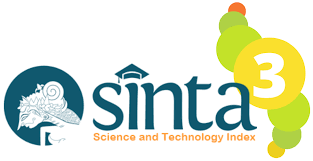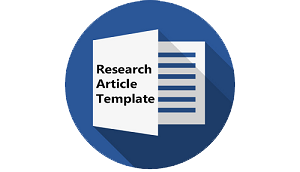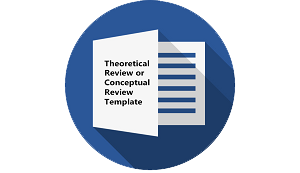KETEPATAN DAN VARIASI PENGGUNAAN PELENGKAP ARAH BAHASA MANDARIN DALAM KARANGAN PEMBELAJAR
DOI:
https://doi.org/10.30957/lingua.v15i2.477Keywords:
Mandarin directional complement, foreign language learning, learners’ essay, accuracy.Abstract
 This research aims at describing the correct use of directional complements and elaborating the diversity and meanings of compound directional complement (CDC) used in Mandarin learners' interlanguage. This research is a case study on the essay of Universitas Indonesia Chinese Study Program students. Results were obtained through qualitative data analysis method supported by simple calculation. Learners’ accuracy was reflected in identifying the direction of action, ordering the constituents in a sentence with directional complement, and selecting the motion verb. Meanwhile, inaccuracy appeared in four categories: misselection, misordering, overinclusion, and blends. On the other hand, the use of directional complements with literal meaning was very diverse, but not so for the metaphorical ones. Although the frequency of the metaphorical use of CDC was higher than the literal ones, there was a lack of the variation in the type of CDC used by the learners.
Â
Â
Downloads
References
Cakradiwati, Ayubi dan Hasanah, Hana Nurul. 2017. “Pelengkap Arah Majemuk èµ·æ¥ QÇlái dan 出æ¥ChÅ«lái: Perbedaan dalam Distribusi dan Pemakaiannya dalam Kalimatâ€, dalam: Proceeding of the International Young Scholars Symposium on Humanities and Arts 2017: 38-54. Tersedia pada: https://inusharts.ui.ac.id/wp-content/uploads/sites/31/2018/01/Proceeding_INUSHARTS17_FINAL-2018 JAN24.pdf.
Dippner, Kevin. 2010. Metaphorical Use of Mandarin Compound Directional Complements. Oslo: Oslo University.
Hui Yin. 2011. “The Cognitive Semantics of Chinese Motion/Directional Verbsâ€, Working Papers of the Linguistics Circle of the University of Victoria 21:118–125. Tersedia pada: https://journals.uvic.ca/index.php/WPLC/article/ view/5945/2701.
James, Carl. 1998. Errors in Language Learning and Use. Malaysia: Longman.
Li Dejin dan Cheng Meizhen. 2008. A Practical Chinese Grammar for Foreigners. Beijing Language and Culture University Press. Tersedia pada: http://vdisk.weibo.com/s/sJweghc XH5Ic.
Li Yan. 2016. “A Study on the Second Language Acquisition for Chinese Simple Directional Complement†dalam Sino-US English Teaching, 13 (11): 885-896. Tersedia pada: https://www.davidpublisher.org/Public/uploads/Contribute/ 582aa74166ff3.pdf.
Liu Yuehua, Pan Wenyu, dan Gu Wei. 2003. 实用现代汉è¯è¯æ³• ShÃyòng xià ndà i Hà nyÇ” yÇ”fÇŽ. Beijing: Commercial Press.
Peyraube, Alain. 2006. “Motion Events in Chinese: A Diachronic Study of Directional Complementsâ€. Tersedia pada: https://www.researchgate.net/publication/29079 3924_Motion_events_in_Chinese_a_diachronic_study_of_directional_complements.
Qi, Chunhong, Panpan Zhao, dan Wei Na. 2016. “Suggestions on Teaching Chinese Directional Complements Based on Chinese Typological Characteristicsâ€. Prosiding dalam 2nd International Conference on Education Science and Human Development (ESHD 2016). Tersedia pada: http://dpi-proceedings.com/ index.php/dtssehs/article/view/ 5193/4817.
Roose, Kristin. 2010. Using the Simple and Complex Directional Complements in Chinese for Beginners. Muncie, IN: Ball State University. Tersedia pada: https://cardinalscholar.bsu.edu/bitstream/handle/handle/192280/R66_2010Roose Kristin.pdf?sequence=1&isAllowed=y.
Universitas Peking. 1981. Modern Chinese: A Second Course. New York: Dover Publication.
Yang Jizhou et al. 2013. Hanyu Jiaocheng, Buku Mandarin Komprehensif Volume 3 (cetakan Indonesia). Jakarta: Legacy.
Downloads
Published
How to Cite
Issue
Section
License
Authors who publish with this journal agree to the following terms:
- Authors retain copyright and grant the journal right of first publication with the work simultaneously licensed under a Creative Commons Attribution-ShareAlike 4.0 International License that allows others to share the work with an acknowledgement of the work's authorship and initial publication in this journal.
- Authors are able to enter into separate, additional contractual arrangements for the non-exclusive distribution of the journal's published version of the work (e.g., post it to an institutional repository or publish it in a book), with an acknowledgement of its initial publication in this journal.
- Authors are permitted and encouraged to post their work online (e.g., in institutional repositories or on their website) prior to and during the submission process, as it can lead to productive exchanges, as well as earlier and greater citation of published work (See The Effect of Open Access).















